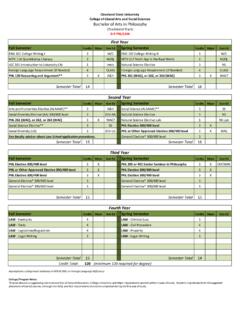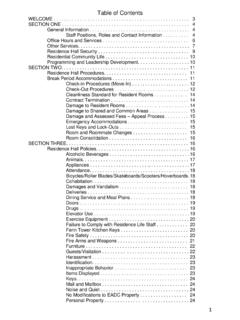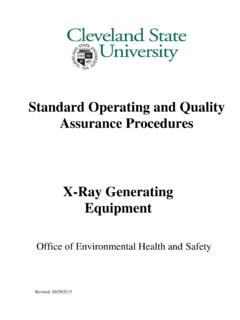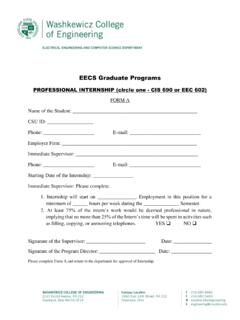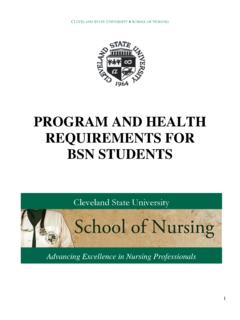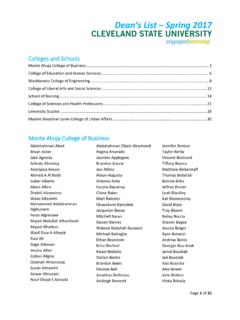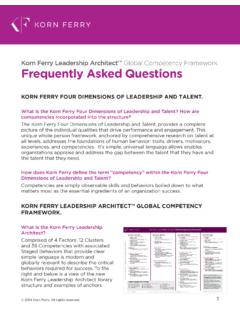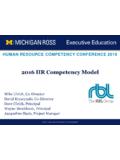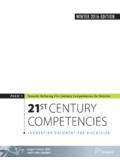Transcription of Global Leadership Competence: A Cultural Intelligence ...
1 Global Leadership competence : A Cultural Intelligence Perspective Chen Oi Chin, College of Management, Lawrence Technological University 21000 W. Ten Mile Road, Southfield, MI 48104, Phone: 734-717-2017 Fax: 734-973-2349 Email: and Lisa P. Gaynier, 3215 Sunnywood Dr. Ann Arbor, MI 48103, Phone: 734-997-8806 Fax: 734-997-8806 Email: ABSTRACT Globalization is demanding new Leadership competencies. This paper discusses the increased complexity of the task and relationship functions of Leadership and argues that the 21st century requires high levels of Cultural Intelligence (CQ). The authors expand Hollander s Leadership concepts, emphasizing the importance of culture and propose a developmental model of Global Leadership competence .
2 Keywords: Globalization, Leadership , Culture, CQ, Task, Relationship Presented at the 2006 MBAA Conference Copyright 2006 Introduction Leadership is a complex process involving the interactions of leaders, followers and situations. This paper argues that in addition to high levels of intellectual Intelligence (IQ), and emotional Intelligence (EQ), twenty-first century leaders also need Cultural Intelligence (CQ) to navigate the unique complexity of a Global environment. We modify Hollander s approach (1978), depicting the Leaders-Followers-Situation dynamic, by introducing task, relationship and the three intelligences, IQ, EQ and CQ. Further, we propose a model of Global Cultural development called the Global Leadership competency model that will help leaders in their developmental path to effective Global Leadership .
3 The following Leadership Process Framework (Figure 1) expands Hollander s original framework to capture and depict a dynamically organic system of interconnectedness. Leaders and followers interact within and across boundaries. Similarly, situations independent of leaders and followers (such as unrelated market forces) can affect leader and follower dynamics. Situations can also engulf leaders and followers ( , natural disasters or radically new market forces that render industries extinct). Followers generally outnumber leaders and their greater numbers inherently indicate a diversity of needs, skills, and abilities. Therefore, in the diagram they are depicted as a larger circle relative to the leaders circle. The largest circle is drawn with dotted lines to indicate the magnitude, uncertainty, complexity and fluidity of situations (which can also include other leaders and followers).
4 While there are many factors that contribute to the dynamics of a human system ( , leaders, followers and situations), task and relationship interactions are highly influenced by the leaders IQ, EQ and CQ. Figure 1: Leadership Process Framework The Complexity of Leadership Process Viewed from an historical perspective, leaders, followers and situational dynamics have always existed, but the emphasis on the role, importance, and impact of each element has changed over time (Hooper and Potter, 2000; Higgs, 2003). The focus has largely been on leaders and has FLS-IQEQCQGoalTasks and RelationshipsProcess evolved from simplistic command and control Leadership styles to transactional exchange, to transformational (Bass, 1998; Avolio, 1999; Tejeda, 2001). Studies of leaders and Leadership in recent decades have given us multiple perspectives as well as deepened our insight into the Leadership process.
5 The three elements are a critical part of the Leadership equation (Hughes, 2006). While working with followers of diverse backgrounds and job characteristics in given situational variables, there are two basic categories of activity that shape leader s effectiveness: task and relationship. Through extensive Leadership research (Halpin & Winer, 1957; Blake, Mouton, Barnes, Greiner, 1964; Fleischman, 1973), task and relationship are distinguished in two dimensions: Initiating Structure (task behavior) and Consideration (relationship behavior). Task behavior is the extent to which a leader engages in one-way communication, explaining what each follower is to do, as well as when, where, and how tasks are to be accomplished. Tasks emphasize deadlines, structure projects, and standardize procedures: the desired outcomes as well as the desired means are all concerns in the Leadership process.
6 To cope with such high task demands, leaders are expected to be equipped with high IQ attributes such as analytical, logical and reasoning skills. Such rational behavior was highly valued in the industrial age. Many organizations generally base leader selection on high IQ (Neisser et al., 1996; Ree & Earles, 1992, 1993). Relationship behavior or Consideration is the extent to which a leader engages in two-way communication by providing socio-emotional support, psychological strokes, and facilitating behavior. Industrialization has, for over a century, emphasized mechanization, efficiency, time management and any approach that would result in high levels of productivity by employees. People were viewed and treated mechanistically, resulting in unprecedented social and health problems and alienation (Weiner, 1954; Braverman, 1974; Morgan, 1997).
7 Even theories concerning relationship (Fiedler, 1967; Evans, 1970; Hersey and Blanchard, 1977) in the second half of the twentieth century departed little from the emphasis on tasks and productivity. 21st Century Leadership Imperative The concept of relationship began to change in the 1960s. The dehumanizing elements of the industrial age began to shift as the work of psychologists such as Sigmund Freud and Carl Jung gained ascendance. Their psychodynamic approach recognized that human beings, whether leaders or followers, have qualities and needs in common, regardless of rank. Further, despite a western bias in favor of reason, there is growing awareness that we all function using our emotions (Calne, 1999; Muramatsu and Hanoch, 2004). A second compelling phenomenon is that workers, particularly those in western countries, have high needs for self-actualization in work and life (Hofstede, 1980).
8 They are no longer simply working to live. They live to work, and work must be fulfilling. Interconnectivity and mutual influence exist inherently amongst people working or living together. In order to gain respect, trust and support from subordinates, leading by feel (emotional Intelligence ) has become even more important for leaders than in past ages (Goleman, 2004). Task and human relationships are increasingly occurring beyond a company s local territory or with other nations of different cultures, resulting in an increasing demand for new Leadership competencies and behaviors in order to cope effectively with Global conditions. There are also situational changes in expanding from a local to an international environment. Kegan (1994) goes further, arguing that modern culture s demands on people require a more complex consciousness than ever before.
9 The most complex organism in any system is invariably the human being (Potter, undated). Unquestionably, effective management of relationships is the key to effective Leadership (Hollander, 1978; Goleman et. al., 1999). Increasing social, Cultural and business complexity necessitates change in the nature of competent Leadership . Leadership must address human needs and unlock human potential by transforming human behavior. Leaders themselves must be capable of having a transcendent impact on the individuals who work in their organizations (Potter, undated). Tasks are principally intellectual and rational (IQ) activities. To use an information technology analogy, they might be thought of as the hardware of human activity. Relationships are an emotional (EQ) activity, the software of human activity. Cultural Intelligence (CQ) encompasses IQ and EQ.
10 CQ entails the capacity to decipher, interpret and integrate both rational and emotional behaviors, while comprehending the deeper meaning (and meaning-making) of life. Leaders with high CQ are able to adapt to new Global environments as well as effectively interact with people of diverse cultures (Earley and Ang, 2003). In summary, the western Enlightenment tradition valued Intelligence as measured by IQ. It was (and still is) the recognized criteria of Leadership and general competence in western business research literature. In the 1990s, emotional Intelligence (EQ) began to gain ascendance (Goleman, 1995). In addition to the vital need for high IQ and EQ, Global leaders are now facing an unprecedented challenge to develop a new set of competencies. That new class of competencies is Cultural Intelligence .

